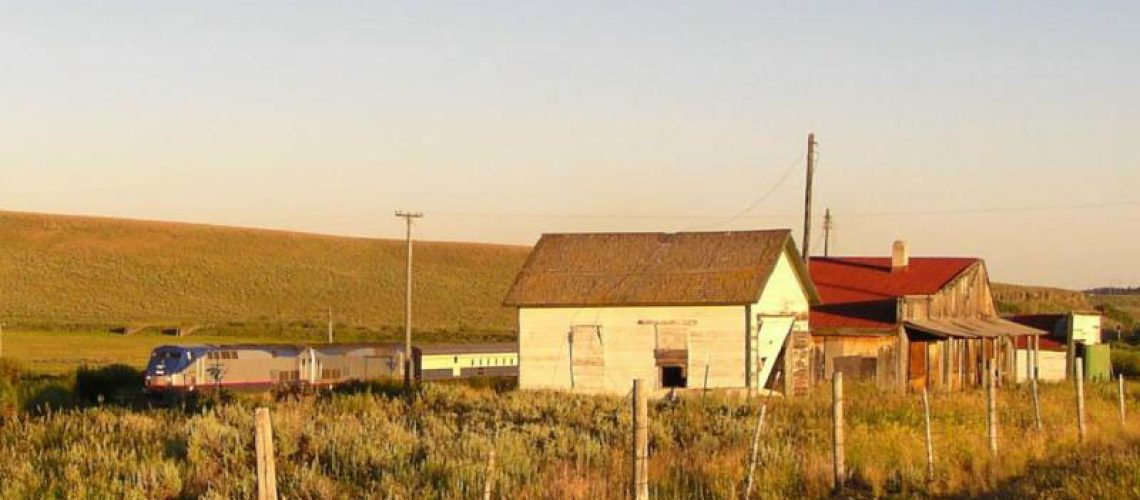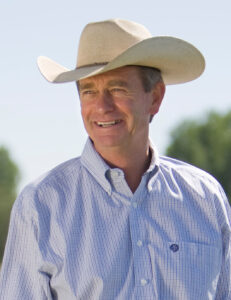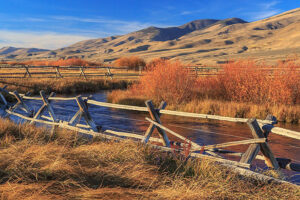Saving Red Idaho Through Its Rural Heart

The upcoming election for governor in November of 2022 is critical for the future of our state, and its most important asset: its rural areas. These are the places that make Idaho special — these are the places that provide our state with its economic backbone, through agriculture, forestry, mining and tourism.
Roughly 88 percent of Idaho’s land area is in rural counties, which is home to 28 percent of the state’s total population — making Idaho both low density and highly rural.
Facts About Idaho Agriculture

- Our state has almost 25,000 farms and ranches producing more than 185 different commodities.
- Idaho is in the top ten states in the US in 30 of said commodities.
- Idaho is the third largest agricultural state in the West — and second largest in net farm income.
These rural areas and the people who live in them are the heart of Idaho, and they need our help.
They need a leader who understands the unique challenges they face, and who is committed to working with them to overcome these challenges.
This is why we need to elect a governor who will fight for rural Idaho and its people.
Only by working together can we keep Red Idaho red.
What Governor Little Has Done for Rural Idaho — Record Investments in Water and Agriculture
 On March 28, 2022, Governor Brad Little signed, as part of his “Leading Idaho” plan, additional investments in water infrastructure to aid in the economic vitality of agriculture and rural Idaho.
On March 28, 2022, Governor Brad Little signed, as part of his “Leading Idaho” plan, additional investments in water infrastructure to aid in the economic vitality of agriculture and rural Idaho.
HB 769 invests in state water infrastructure to guarantee a steady stream of water now and into the future.
“Water is the lifeblood of Idaho’s economy. With the help of the Legislature, particularly our co-sponsors Representative Matt Bundy and Senator Carl Crabtree, we’re investing $325 million just in water infrastructure. I can’t think of a better investment for our children and grandchildren than ensuring clean, abundant water, especially here in the arid desert,” Governor Little said. “Idaho leads the nation in conjunctive management of its water resources. We know that the water behind us is directly connected to the water below us. We’ve done a great job of managing the resource, but we need to do more as our state grows and continually faces water scarcity. With these one-time investments, we can increase our storage capacity to better withstand drought years.”
Governor Little has also boosted the economy in rural communities in terms of outdoor recreation opportunities and the improvement of state parks.
Further, according to Little’s campaign manager, Hayden Rogers: “Governor Little has a proven track record of cutting red tape, responsibly managing the budget and the economy, and providing Idaho families and businesses with historic tax relief and record investments in schools, roads, water, and other areas […] Those historic accomplishments and facts are non-debatable […] Brad Little is hands-down the most accessible Governor in Idaho history. He has made it a priority to meet with Idaho families, businesses, and members of the press. Idahoans know what Governor Little stands for. They know he will continue to fight for them and make our state the place where our children and grandchildren choose to stay.”
Rural Oregonians Have Taken Notice
According to The News-Review, a five-day-a-week community newspaper published in Roseburg, Orgeon since 1867: “Idaho governor says he understands rural Oregonians.”
This comment followed the news that Douglas and Josephine county voters’ idea for southwestern and eastern Oregon to break off from Oregon’s northwestern counties and join Idaho.
Proposals to join Idaho have been put forward by rural Oregonian’s who feel that Oregon’s legislature is too liberal and doesn’t listen to what rural Oregonians want. They realize that they would benefit from lower taxes, fewer business regulations and less gun control.
Little has told Fox News that he believes proponents of Greater Idaho want more freedom: “It’s their call. I understand what takes place in the Portland area has a big impact on those rural parts of Oregon, and I understand they’re looking at Idaho fondly because of our regulatory atmosphere, our values. That doesn’t surprise me one bit.”
Janus McGeachin Lays Out Her 10 Point Plan for Her First 100 Days As Governor If Elected
 “On the very first day of my administration, Idaho will have a governing agenda that is crafted by the people of Idaho,” she declared. “The men and women of our state have suffered under four years of neglect and abuse,” McGeachin said. “Even if my opponent is not incompetent, he is certainly indifferent to the thousands of hardworking Idahoans who lost their businesses and livelihoods during his lockdown of our economy.”
“On the very first day of my administration, Idaho will have a governing agenda that is crafted by the people of Idaho,” she declared. “The men and women of our state have suffered under four years of neglect and abuse,” McGeachin said. “Even if my opponent is not incompetent, he is certainly indifferent to the thousands of hardworking Idahoans who lost their businesses and livelihoods during his lockdown of our economy.”
When the coronavirus pandemic began to spread in March 2020, a temporary stay-at-home order was issued by the governor, who feared that hospitals might be overwhelmed with patients, as well as medical on leave due to illness. Little initially imposed limitations, which were gradually relaxed throughout the summer. However, Idaho’s unemployment rate rose above 11%. It has since recovered to pre-pandemic levels.
Janus McGeachin’s 10 Priorities for Idaho
- The restoration of health freedom and an end to the threat of medical tyranny.
- Election integrity
- Idaho’s economy
- Constitutional rights
- State sovereignty
- Energy independence
- Military and defense
- The role of the office of the governor
- Education
- Traditional conservative values
As part of her 2nd Amendment strategies, she would provide financial incentives for increased firearm and ammunition manufacturing in Idaho, according to McGeachin.
She went on to add that as governor, she would impose an “Idaho-first” approach on state government.
“Under my watch, Idaho state agencies will know they must reply to your emails, answer your phone calls and work on issues you care about,” she said.
Key Issues Facing Rural Idaho
 Rural Idaho is under threat from a number of different directions. The first is development pressure. As our state’s population continues to grow, there is more and more demand for land for housing, industry and recreation. This pressure can lead to the loss of farmland and open space, as well as the fragmentation of rural communities.
Rural Idaho is under threat from a number of different directions. The first is development pressure. As our state’s population continues to grow, there is more and more demand for land for housing, industry and recreation. This pressure can lead to the loss of farmland and open space, as well as the fragmentation of rural communities.
Rural Idaho is also threatened by changes in the economy. The rise of automation and globalization have led to the loss of many good-paying jobs in manufacturing and agriculture. This has had a devastating impact on many rural communities, which are now struggling with high levels of poverty and unemployment.
These challenges are not insurmountable, but they do require a different approach than what we’ve been doing up until now. We need a governor who understands the unique challenges faced by rural Idaho, and who is committed to working with us to find solutions.
Red United States provides more than just patriotic apparel — we want to fight for the best candidate for The Gem State.
Rural Idaho is worth saving, and we need a governor who will fight for us.
